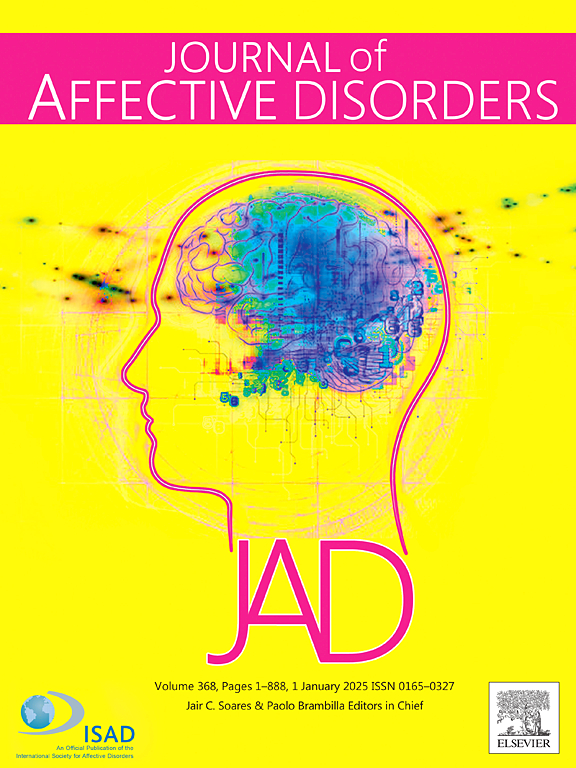Response inhibition deficits in unmedicated youth with ADHD: An ERP/sLORETA study
IF 4.9
2区 医学
Q1 CLINICAL NEUROLOGY
引用次数: 0
Abstract
Background
Attention-Deficit/Hyperactivity Disorder (ADHD) is characterized by impairments in executive functioning, particularly response inhibition (RI). This study combines time-domain analysis and source analyses of event-related potentials (ERPs) to explore the underlying neuropsychological mechanisms of RI deficits in unmedicated youth with ADHD, and assesses ERP features as potential biomarkers to differentiate ADHD from healthy controls (HCs).
Methods
The study included 52 unmedicated youth with ADHD (ages 6–12) and 53 HCs. ERPs were recorded using an oddball paradigm, followed by within- and between-group comparisons. Source localization analysis examined regional brain activation during task performance. Significant ERP features were then used in a machine learning classification model.
Results
Compared to HCs, youth with ADHD exhibited prolonged mismatch negativity (MMN) latency at frontal (Fz) and posterior (Pz) electrodes, and reduced latency at the central (Cz) electrode. Source analysis indicated increased activation in the cuneus and superior temporal gyrus during the MMN-deviant condition, and enhanced activation in the superior parietal lobules, inferior frontal gyrus, and rectal gyrus during the MMN-novelty condition. Additionally, ADHD patients showed higher activation in the middle temporal and middle occipital gyri during the P300-target condition, and increased activation in the superior frontal gyrus and cuneus during the P300-non-target condition. Notably, the classification model achieved an area under curve (AUC) of 0.918 using MMN latency features.
Conclusion
Abnormal ERP patterns in unmedicated youth with ADHD may reflect impaired RI and have potential as neurobiological markers for the disorder.
未服药青少年ADHD患者的反应抑制缺陷:一项ERP/sLORETA研究
背景:注意缺陷/多动障碍(ADHD)的特征是执行功能受损,特别是反应抑制(RI)。本研究结合了事件相关电位(ERP)的时域分析和来源分析,以探索未服药的ADHD青少年RI缺陷的潜在神经心理学机制,并评估ERP特征作为区分ADHD与健康对照(hc)的潜在生物标志物。方法:该研究包括52名未服药的青少年ADHD(6-12岁)和53名hc。erp记录使用一个奇怪的范式,其次是组内和组间比较。源定位分析检查了在执行任务时大脑区域的激活情况。然后在机器学习分类模型中使用重要的ERP特征。结果:与hc相比,青少年ADHD在额(Fz)和后(Pz)电极上表现出延长的错配负性(MMN)潜伏期,而在中央(Cz)电极上表现出减少的潜伏期。来源分析表明,在mmn异常情况下,楔叶和颞上回的激活增加,在mmn新情况下,顶叶上小叶、额下回和直肠回的激活增强。此外,ADHD患者在p300靶条件下表现出更高的颞中回和枕中回激活,在p300非靶条件下表现出更高的额上回和楔叶激活。值得注意的是,分类模型使用MMN延迟特征获得了0.918的曲线下面积(AUC)。结论:未服药的青少年ADHD患者的ERP异常模式可能反映了RI受损,并有可能作为该疾病的神经生物学标志物。
本文章由计算机程序翻译,如有差异,请以英文原文为准。
求助全文
约1分钟内获得全文
求助全文
来源期刊

Journal of affective disorders
医学-精神病学
CiteScore
10.90
自引率
6.10%
发文量
1319
审稿时长
9.3 weeks
期刊介绍:
The Journal of Affective Disorders publishes papers concerned with affective disorders in the widest sense: depression, mania, mood spectrum, emotions and personality, anxiety and stress. It is interdisciplinary and aims to bring together different approaches for a diverse readership. Top quality papers will be accepted dealing with any aspect of affective disorders, including neuroimaging, cognitive neurosciences, genetics, molecular biology, experimental and clinical neurosciences, pharmacology, neuroimmunoendocrinology, intervention and treatment trials.
 求助内容:
求助内容: 应助结果提醒方式:
应助结果提醒方式:


